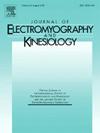人体吸气肌的神经控制。我们从单个运动单元的研究中学到了什么?
IF 2.3
4区 医学
Q3 NEUROSCIENCES
引用次数: 0
摘要
这篇综述涵盖了关于人类呼吸神经驱动的知识收获,这些知识来自于30年来对人类吸气肌单个运动单元的记录。第2节说明了在安静呼吸和自主呼吸时,支配横膈膜、斜角肌、肋间肌和颏舌肌活动的各种吸气运动神经元池输出的不均匀性。第3节描述了横过胸骨旁肋间肌和外肋间肌的呼吸神经驱动的背侧分级时间和大小,其中确定了运动神经元招募的原则,称为神经机械匹配原则,该原则已被确定为更普遍的运动控制原则。第4节着重于衰老、慢性阻塞性肺疾病和颈脊髓损伤中膈肌运动单元放电和形态学的变化,将呼吸驱动的增加与呼吸力学的变化联系起来,并发现这并不总是与皮层对呼吸的贡献(即呼吸中枢控制的变化)相关。我们的研究揭示了呼吸神经驱动到运动神经元的复杂组织,以匹配肌肉本身的解剖和功能复杂性。本文章由计算机程序翻译,如有差异,请以英文原文为准。
Neural control of human inspiratory muscles. What have we learnt from the study of single motor units?
This review covers the knowledge gains made about human respiratory neural drive resulting from ∼30 years of single motor unit recordings from human inspiratory muscles. Section 2 illustrates the non-uniformity of output across the various inspiratory motoneurone pools innervating diaphragm, scalene, intercostal, and genioglossus muscle activity during quiet breathing and during voluntary breathing. Section 3 describes the rostrocaudal graded timing and magnitude of respiratory neural drive across the parasternal intercostal and external intercostal muscles, which identified a principle of motoneurone recruitment termed the principle of neuromechanical matching that has been since identified as a principle of motor control more generally. Section 4 focuses on the changes in diaphragm motor unit discharge and morphology in ageing, chronic obstructive pulmonary disease and cervical spinal cord injury, linking increased drive to breathe to the changes in respiratory mechanics, with the intriguing findings that this is not always associated with a cortical contribution to breathing (i.e. change in the central control of breathing). Our studies have revealed an elaborate organisation of respiratory neural drive to the motoneurones to match the anatomical and functional complexity of the muscles themselves.
求助全文
通过发布文献求助,成功后即可免费获取论文全文。
去求助
来源期刊
CiteScore
4.70
自引率
8.00%
发文量
70
审稿时长
74 days
期刊介绍:
Journal of Electromyography & Kinesiology is the primary source for outstanding original articles on the study of human movement from muscle contraction via its motor units and sensory system to integrated motion through mechanical and electrical detection techniques.
As the official publication of the International Society of Electrophysiology and Kinesiology, the journal is dedicated to publishing the best work in all areas of electromyography and kinesiology, including: control of movement, muscle fatigue, muscle and nerve properties, joint biomechanics and electrical stimulation. Applications in rehabilitation, sports & exercise, motion analysis, ergonomics, alternative & complimentary medicine, measures of human performance and technical articles on electromyographic signal processing are welcome.

 求助内容:
求助内容: 应助结果提醒方式:
应助结果提醒方式:


